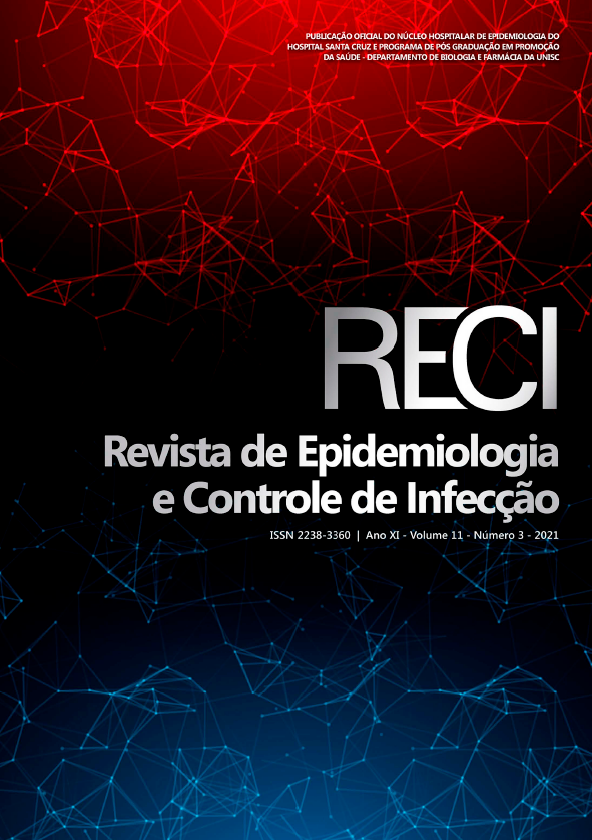Characterize the main adverse events with harm reported in a Teaching Hospital in Minas Gerais
DOI:
https://doi.org/10.17058/reci.v11i2.15324Palavras-chave:
efeitos adversos, gestão de Riscos, qualidade da assistência à saúde, segurança do pacienteResumo
Background and Objectives: adverse events are a major public health problem. The purpose of the study was to characterize the main adverse events with harm reported in a teaching hospital in Minas Gerais. Methods: this is a retrospective cross-sectional descriptive study with quantitative approach, which assessed the reports on adverse events, carried out between January 2015 and December 2018. Pearson’s chi-square test was applied in order to verify the association between categorical variables. Cramer’s measure V was calculated to assess the degree of association between the respective variables. In the observation of statistically significant results, the Z test was applied to compare proportions with adjustments by the Bonferroni method. Results: a total of 445 adverse events were reported, being the highest number in 2018 (61.8%) involving “Abrasion and friction” process (44.7%), which correspond to grades 3 and 4 pressure injuries. Most adverse events were reported by the Emergency Unit (29.2%), and serious harm (7.6%) and deaths (1.3%) were more prevalent in this place. There was a statistically significant association between types of harm and types of incidents (p<0.001), types of harm (p<0.001) and years of occurrence, and also between the harm and the hospital sectors (p=0.003). Conclusion: adverse event reports back institutional risk management by strengthening the patient safety culture.Downloads
Downloads
Publicado
Como Citar
Edição
Seção
Licença
Copyright (c) 2021 Eva Claudia Venancio de Senne

Este trabalho está licenciado sob uma licença Creative Commons Attribution 4.0 International License.
The author must state that the paper is original (has not been published previously), not infringing any copyright or other ownership right involving third parties. Once the paper is submitted, the Journal reserves the right to make normative changes, such as spelling and grammar, in order to maintain the language standard, but respecting the author’s style. The published papers become ownership of RECI, considering that all the opinions expressed by the authors are their responsibility. Because we are an open access journal, we allow free use of articles in educational and scientific applications provided the source is cited under the Creative Commons CC-BY license.


